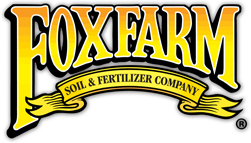January 9, 2024
The ideal environmental conditions for growing mushrooms can vary depending on the species you’re cultivating. However, here are general guidelines that apply to many common edible mushrooms like oyster mushrooms, shiitake, and white button mushrooms:
1. Temperature:
- Incubation Stage:
- Typically, mushrooms require a warm and dark environment during incubation, when mycelium colonizes the substrate. This stage usually occurs between 75-80°F (24-27°C).
- Fruiting Stage:
- The fruiting stage, when mushrooms develop, requires a drop in temperature. A range of 55-70°F (13-21°C) is suitable for many species. However, specific species may have different temperature preferences.
2. Humidity:
- Incubation Stage:
- Higher humidity (around 95%) is usually beneficial during incubation to prevent the substrate from drying out and promote mycelial growth.
- Fruiting Stage:
- Humidity is crucial during the fruiting stage as well. The ideal range is often around 90-95%. This high humidity is necessary for proper mushroom development and to prevent the mushrooms from drying out.
3. Light:
- Incubation Stage:
- Darkness is usually preferred during incubation, as mushrooms develop best without light.
- Fruiting Stage:
- Once the fruiting stage begins, mushrooms need light for proper development. However, they don’t require intense light like plants. Indirect or ambient light is often sufficient.
4. Air Exchange and Fresh Air:
- Fruiting Stage:
- Adequate fresh air exchange is crucial during the fruiting stage. This can be achieved by fanning or using an air exchange system to promote healthy mushroom growth.
5. Substrate:
- Use a substrate suitable for the specific mushroom species you’re growing. Common substrates include a mix of organic materials like grain, straw, and wood chips.
6. Sterility:
- Maintain a sterile environment, especially during substrate preparation and inoculation, to prevent contamination by competing organisms.
7. Fruiting Chamber:
- Set up a proper fruiting chamber to create the ideal conditions for mushroom development. This may include misting the substrate to maintain humidity and providing proper air exchange.
8. pH Level:
- Monitor the pH level of your substrate. Many mushrooms prefer a slightly acidic to neutral pH range.
Important Note:
These conditions are general guidelines, and it’s crucial to research and understand the specific requirements of the mushroom species you’re cultivating. Different mushrooms may have unique needs, and adjusting conditions based on the specific requirements of your chosen species is key to successful cultivation.




